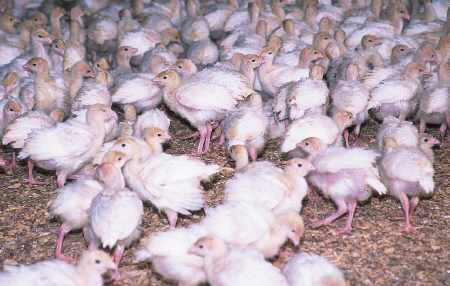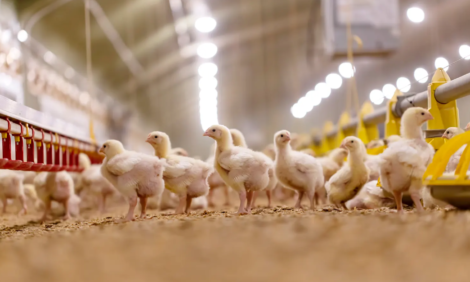



Making the Poultry Industry More Sustainable
Sustainability has become a hot topic for almost all human activities, not least in agriculture. At a meeting dedicated to the subject, different viewpoints were presented on the need for sustainability and how it applies to the poultry industry. Senior editor, Jackie Linden reports on the IPPE Animal Agriculture Sustainability Summit.Sustainable agriculture integrates three main goals - environmental health, social and economic equity, and economic profitability. The heritage of the family farm and the importance of both land and livestock have allowed the industry to take the lead in the development of sustainable practices as a core principle of the poultry business. A variety of philosophies, policies and practices have contributed to this goal. People in many different capacities, from farmers to consumers, have shared this vision and contributed to it.
The fifth annual Animal Agriculture Sustainability Summit at the International Production and Processing Expo (IPPE) in January this year covered operational approaches to sustainability to help identify and discuss the challenges for the future. Two different viewpoints were presented at a conference on the future of sustainability for the poultry industry.
Why Sustainability Matters
"Sustainability is a very important topic and takes me round the world," said Bryan Weech, Director of Livestock for the World Wildlife Fund (WWF), by way of introduction to his presentation.
Animal agriculture - and agriculture generally - increasingly understands the long-term trends. WWF aims to help the food chain understand how it makes changes and it is now waking up to the challenges, he said.
The big questions are how and why this is important. Eating and access to food affect us all as do environmental, economic, societal and political issues.
Animal protein production starts before the livestock on the farm and go both upstream and downstream, he said.
Key is how to utilise resources to provide for future generations because, as Mr Weech explained, we are currently consuming one-and-a-half times this planet's resources.
Looking ahead to 2050, he said, there will be between two and three billion more people, income will have increased by a factor of 2.9 and consumption of food, especially animal protein, will have risen even more rapidly. Furthermore, 70 per cent of the human population will live in cities, making food security, self-sufficiency and trade issues ever more important. Conflicts over natural resources may occur.
Global food production in the next 40 years will have to match that of the last 8,000 years, according to Mr Weech. "We are eating the planet," he said
|
* "Sustainability matters in a multi-faceted way" |
Bryan Weech, WWF
|
Agriculture is the human activity which uses the most resources, he said, adding that it produces the most greenhouse gases (GHG) and that animal protein accounts for the greatest share of GHG produced by agriculture. Water use will also become increasingly critical as droughts become more common across the globe as the result of climate change. Agriculture accounts for 70 per cent fresh water used today.
The world's top food exporters are also those most affected by drought over recent years, which has led to disruptions of trade patterns. And a further 24 per cent more land will be needed to feed future generations, which WWF sees as leading to huge changes in terms of biodiversity and water use.
"Sustainability matters in a multi-faceted way," said Mr Weech, "We need to freeze the footprint of food production." WWF aims to make all food production more sustainable.
GDP growth is fastest in countries that are food importers so they cannot export to overcome problems.
Mr Weech explained that collaborative approaches are having some success. A group of 50 countries, the Consumer Goods Forum, for example, has agreed to take deforestation out of the supply chain by 2020 for four commodities and it has US government support. The Banking Environmental Initiative, led by 10 banks, is also aiming to reduce deforestation, starting with the palm oil business in Indonesia and later focusing on soybean and beef production in Brazil.
Mr Weech believes this will affect the way we do business in future.
There are many solutions, he said, in order to address the many problems. Whatever happens, performance needs to change and better producers need to help implement the best practices.
Individuals can have an impact but we need to work together to produce more with less, said Mr Weech. Food companies can impact the whole supply chain, he concluded.
Measuring What Matters
"In Nature, everything is connected and Nature is closely linked with economic systems - and added to that, everything is changing," Dr Greg Thoma of the Center for Agricultural and Rural Sustainability at the University of Arkansas told the Animal Agriculture Sustainability Summit.
Change imposes risks on the economy and on businesses, he continued, but we need to recognise that bias affects all our decisions.
This is a global issue, with many countries in west Asia, Africa and much of South America dependent on food imports. Forty per cent of the Earth's land area is crop or pasture, he said. It has been estimated that we need to treble food production to meet the growing need and that research and technology will cover an increase of about 2.5-fold.
We need to measure what matters and what we can control, according to Dr Thoma.
Turning to China to illustrate the complexities of the issue, he pointed out that while the flow of the Yellow River has fallen over the last 40 years, that of the Yangtze has risen. So the prediction points to the east of the country becoming wetter while the west gets drier. How can that be managed, he asked, and what will be the overall effects of China's agriculture?
Water is one of the most critical resources, he stressed.
Putting water into the poultry context, it has been estimated that an average chicken requires a total of 1,170 litres of water from growing the feed crops to the table. However, the actual figure will vary widely, depending on the production method and even where the maize for the feed is grown, for example.
Water stress is a function of the amount of water use and the amount of water available (water use/water availability) and can be used as a predictor of direct economic costs. A map of the world shows that water threat is increasing in western Asia particularly as well as northern Africa to a lesser extent; in these regions, current water use is unsustainable. In southern and central Asia and the Caucasus, water scarcity is approaching, according to UN estimates.
|
* "The aim is to feed 9.25 billion people without one hectare more of land or one drop more of water" |
Dr Greg Thoma, University of Arkansas
|
Dr Thoma went on to define sustainable agriculture as one which will:
- meet the needs of the present while enhancing the ability of future generations to meet their needs
- allow increasing productivity to meet future food demands
- decreasing impacts on the environment
- improving human health, and
- improving the social and economic well-being of agricultural communities.
In essence, the aim is to feed 9.25 billion people without one hectare more of land or one drop more of water, he said.
The major challenges in the food system stems from the facts that many consumers are far removed from producers and that the complexity of the supply chain results in perverse feedback systems and irrational decisions. Furthermore, volatility of food prices creates immediate human suffering and political instability, especially for the bottom billion - and it is the increasing prosperity of these same people that will affect the future prosperity of all humanity, according to Dr Thoma.
Measuring sustainability
Measurement depends firstly on metrics, quantifiable phenomena to measure an end point, Dr Thoma said. The aggregation of metrics to a single number (index) requires normative criteria for integration of metrics with different units. The index is used to create the baseline or benchmark to measure change over time.
Life Cycle Assessment (LCA) is one method for measuring the inputs and outputs in a process in a step towards quantifying sustainability standard methods for LCAs include ISO 14040 and 14044 Standards and PAS 2050 for greenhouse gases. However, there are no standards for Life Cycle Inventory, he said, and no guidelines for most other metrics.
In LCA, each process is examined for its inputs from Nature and from other processes and its outputs to Nature and other processes. These are then connected together to account for the impacts 'from cradle to grave' for all the raw materials that are required to produce the product in question.
LCAs should help us to understand and manage the supply chain but the complexity of the food chain makes this very difficult in practice and there is debate over appropriate cut-off points. Furthermore, taking the chicken as an example, how should the LCA be allocated to the various parts of the chicken? The legs and breast could be assessed separately and this could be done by mass or by value, which could greatly influence the result.
There are a great many sustainability initiatives but Dr Thoma stressed that they should all have four vital features: outcomes-based, science-driven, technology-neutral and transparent.
USDA-backed Field to Market, he explained, is a collaborative stakeholder group of producers, agribusinesses, food and retail companies, and conservation organisations that are working together to develop a supply-chain system for agricultural sustainability. They are developing outcomes-based metrics to measure the environmental, health, and socioeconomic impacts of agriculture, beginning with national scale environmental indicators for a number of US crops.
For each crop, a "spider's web" is created using one axis for each of five efficiency indicators: land use, energy use, soil loss, irrigation water use and climate impact. Using the examples of maize, soybeans, wheat and cotton, Dr Thoma showed that overall efficiencies have been registered for all crops - to varying degrees - between 1987 and 2007.
Measuring sustainable metrics is important, he said, because sustainable management equates to risk management. Threats to sustainable supply chains come from safety, security and stability.
Finally, Dr Thoma outlined the eight stages in the metric framework that supports sustainability, as described in the Sustainability Metric Calculator from the US National Resource Conservation Service (NRCS):
- define critical efficiency metrics, such as feed conversion in poultry
- define critical impact metrics
- benchmark performance for each metric
- develop and adopt goals for improvement across each metric
- implement improvement strategies
- measure each metric using best scientific methods at prescribed frequencies
- report results, and
- adjust and adapt practices as necessary.

(Image: NRCS)
March 2013








